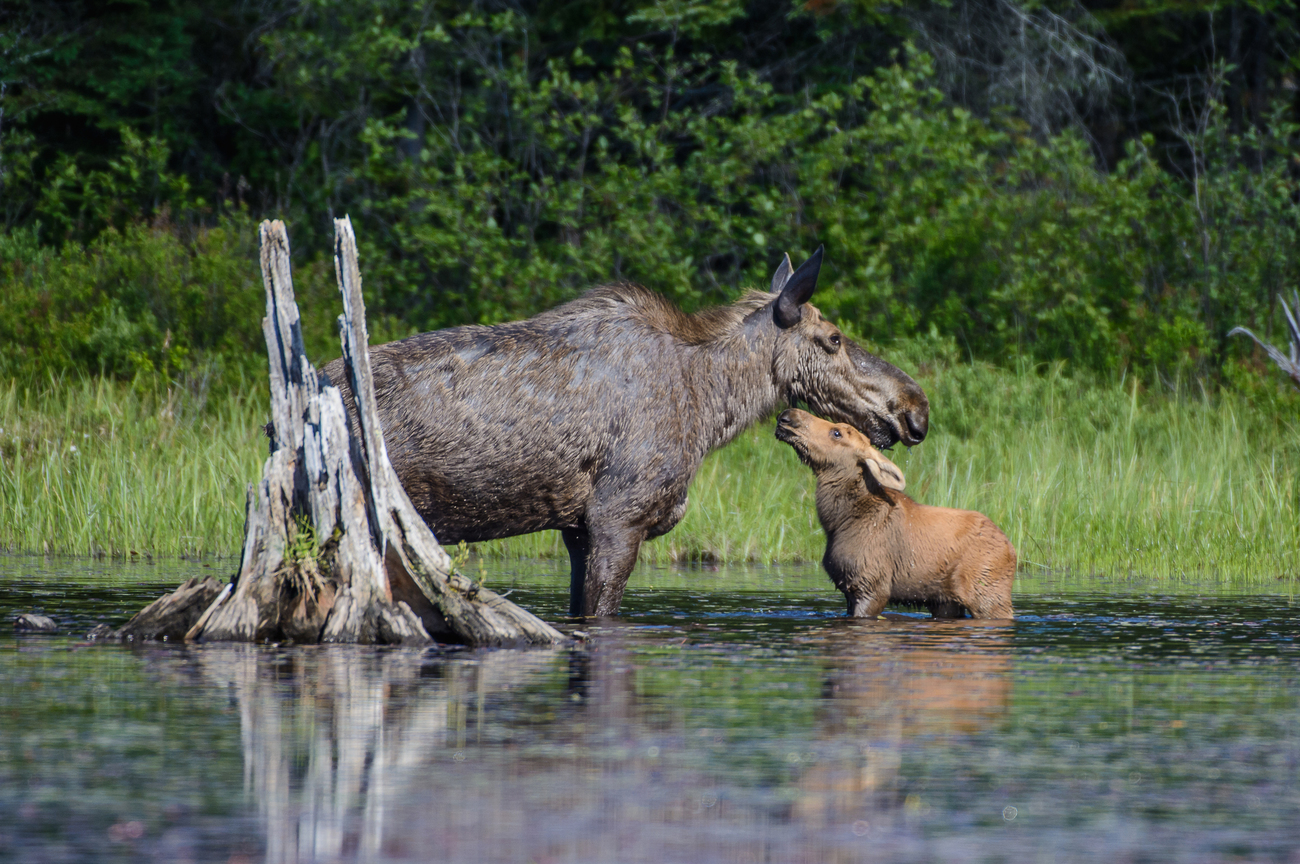Kate Wall
the path to success is actually a wildlife corridor
the path to success is actually a wildlife corridor

July 1st, 2021
Yesterday, as part of the INVEST Act, H.R. 3684 - legislation aimed at addressing our nation's surface infrastructure issues - the U.S. House of Representatives passed the Wildlife Corridors Conservation Act and authorized $400 million for projects to reduce wildlife-vehicle collisions. These important provisions will safeguard biodiversity while helping to stimulate the U.S. economy, mitigate climate impacts, and reduce highway fatalities.
Habitat loss and fragmentation are leading drivers of biodiversity loss, fueling a worsening extinction crisis that threatens not only wildlife, but also the health of the critical ecosystems we rely on for our basic needs. Wildlife corridors and crossings protect biodiversity by allowing wildlife to move safely in response to ever-changing conditions. These pathways not only help to maintain healthy wildlife populations, they also help protect human health and wellbeing by preventing collisions, promoting resilient ecosystems, and mitigating climate impacts on native species. Indeed, a new report resulting from a biodiversity and climate change workshop co-sponsored by the Intergovernmental Science-Policy Platform on Biodiversity and Ecosystem Services (IPBES) and the Intergovernmental Panel on Climate Change (IPCC), calls for wildlife corridors as part of an integrated strategy to address both climate change and biodiversity loss.
We applaud the House for including support for wildlife corridors and crossings in the INVEST Act, and now look to the Senate to act quickly to do the same.
The majority of us have had frightening close encounters when it comes to wildlife and transit, swerving to avoid a deer or slamming on our breaks as a wild animal darts in front of our car. Those close calls stick with us and are far more common than most people think. Our surface roads and water transit routes are critical to our own way of life—our mobility, our sense of perceived freedom. What many fail to realize is that these same transit routes also represent physical barriers that can be insurmountable for wildlife and dangerous for everyone. Sadly, collisions between wildlife and vehicles are a fact of life in most parts of the country. They are deadly for an untold number of animals and are often devastating for drivers, as well. Every year in the U.S., an estimated 1 to 2 million collisions occur between motorists and large animals. ([i] Known as wildlife-vehicle collisions, or WVCs, these result in 200 human deaths and over 26,000 injuries.[ii]
In addition to transportation routes, structures such as walls, fences, and dams immensely affect and impede migratory routes, cutting off food and water supplies, and otherwise disrupting important wildlife habitats. Not only can this lead to problems for wild animals, but to increased frustrations for their human neighbors, as animals excluded from their traditional habitats may start foraging crops, gardens, or stalk pets.
The Moving Forward Act
Fortunately, an infrastructure package —H.R. 2, the Moving Forward Act—making its way through the U.S. House of Representatives, would do much to address both WCVs and wildlife connectivity issues with wildlife crossings and corridors. Wildlife crossings—structural elements like underpasses, overpasses, culverts, crosswalks, or animal detection systems, allow wildlife to avoid road traffic. That makes everyone safer. And they are wildly effective as studies demonstrate that such crossing structures like these reduce WCVs by up to a staggering 97%. The current House bill includes $300 million to construct wildlife crossings and is similar to funding included in the highway bill unanimously approved by the Senate Environment and Public Works Committee last summer. Adding wildlife crossings can effectively save human and animal lives, produce cost-savings for the nation to the tunes of billions of dollars annually, and support more resilient landscapes by allowing wildlife to move more freely, particularly in the face of climate change.
In addition to funding for wildlife crossings, the bill includes funding for wildlife corridors via the Wildlife Corridors Conservation Act (H.R. 2795/S. 1499). Corridors also offer routes between protected areas, allowing native fish, wildlife, and plants to thrive via moving along traditional migratory routes, seeking new food and water sources, escaping fire and flood, and even finding mates. The corridors legislation, which was introduced in the House by Reps. Don Beyer (D-VA) and Vern Buchanan (R-FL), and in the Senate by Sen. Tom Udall (D-NM), would create a system of national wildlife corridors through a combination of designations on federal lands, grants for voluntary non-federal land-holders, and support to tribes. Maintaining the routes wildlife need to move freely is fundamental to sustaining wildlife populations and preventing potential deeper conflicts with landholders.
IFAW has long supported both wildlife crossings and wildlife corridors. Not only do they improve safety for humans and animals, they also protect biodiversity and safeguard ecosystem health. Though we applaud Congress embracing these important concepts through legislation, there is a long way to go to finalize their passage into official legislation. However, the very inclusion of wildlife crossing and corridors in larger legislative packages signals that the momentum behind them is growing. And that really is good news. Wildlife corridor protection and crossing construction are the right way—the responsible way—to rebuild America’s roads. As stewards of both the environment and its rich biodiversity, IFAW supports and applauds this critical conservation measure.
[1] Huijser, M.P., P. McGowen, J. Fuller, A. Hardy, A. Kociolek, A.P. Clevenger, D. Smith and R. Ament. 2008. Wildlife-vehicle collision reduction study. Report to Congress. U.S. Department of Transportation, Federal Highway Administration, Washington D.C., USA.
[2] Id.
-Kate Wall, Senior Legislative Manager
Related content
every problem has a solution, every solution needs support.
The problems we face are urgent, complicated, and resistant to change. Real solutions demand creativity, hard work, and involvement from people like you.